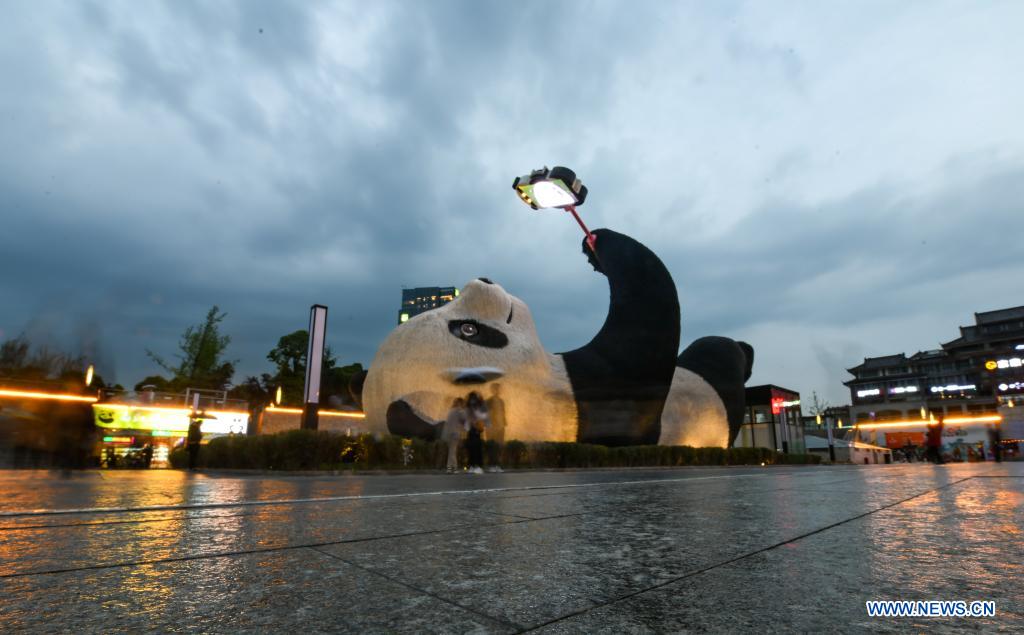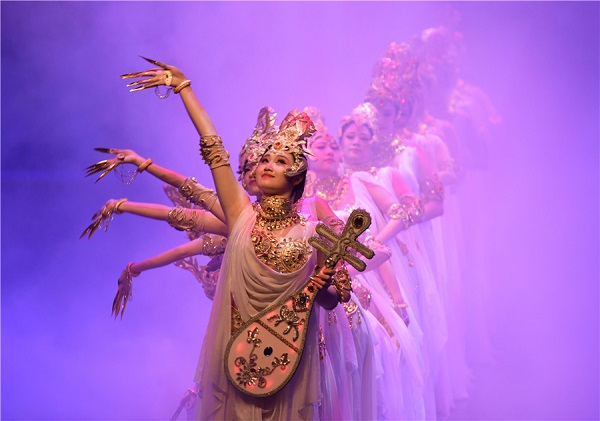Chinese robot band inspires remix of hi-tech, tradition
BEIJING, April 12 (Xinhua) -- A night concert at China's Tsinghua University attracted over 1,500 students and traditional Chinese music fans on Saturday evening in Beijing.
The concert celebrated the university's 110th anniversary. Fang Jinlong, a master of the traditional Chinese instrument Pipa, and three humanoid robots from the Tsinghua Moja Robot Band performed several Chinese music pieces.
"I'm happy to see our performance can mix science and technology with traditional Chinese culture," said Fang. Fang added that the robots are more precise and formal, while he is more agile and improvisational, so the two integrate well.
The robot band comes from interdisciplinary research by the Academy of Fine Arts and the Future Laboratory of Tsinghua University. The band name "Moja" is from Mohism, one of many schools of thought before the Qin Dynasty (221 B.C.-207 B.C.).
The band consists of three robot musicians, "Yuheng," "Yaoguang," and "Kaiyang," named after three stars of the Big Dipper. They play three kinds of traditional Chinese instruments. These are the bamboo flute, Chinese harp, and Paigu, a set of Chinese drums.
Founded in 2018, the team to develop the band is mainly composed of students, teachers, and graduates from Tsinghua University. They have professional backgrounds such as computing, mechanical engineering, modeling and sculpture, and music composition.
As the team's chief scientist, Mi Haipeng is an associate professor at the Academy of Fine Arts. He participated in the research and development of a robot rock band when he studied in Japan. That experience inspired his dream to make a Chinese robot band.
Mi said traditional Chinese instruments' sound and playing techniques are different from those of western musical instruments. The emphasis is more on the artistic conception and expression of the players. This kind of non-precise and non-quantitative control brings challenges to Moja robot development.
"In our research, we constantly explore how to solve these problems so that the robot can maintain the Chinese tradition characteristics when playing music," he added.
During the concert, the flute blower Yuheng used different fingers to press the flute holes while blowing the air into the pipe with changeable pressure to achieve the note.
Yaoguang plucked the Chinese harp's strings with its 40-plus "fingers," with each one striking one string. It ensures a broader chord range with faster speed.
Kaiyang imitated the movement of the human wrist so that the drumsticks hit the drum surface and created drum sounds.
Mi said the music pieces in the concert were specially tailored for the robots to play. The robots' shells and stage costumes were made by 3D printing technology.
He added that there are more performance plans for Moja in the future, introducing new music pieces. The team, meanwhile, would improve the musical sense and emotional expression of robots.
"Robots represent science and technology, which is popular among young people. We hope this robot performance will take root in traditional Chinese music and inspire young people's interest in our culture," Mi added.
"We want to present our achievements of science, technology, and art through the stage. We also aim to spread traditional music and culture with artists through innovative expressions," said Zhao Hong, director of the Tsinghua University Center for Arts Education, the concert organizer.
Photos
Related Stories
Copyright © 2021 People's Daily Online. All Rights Reserved.










